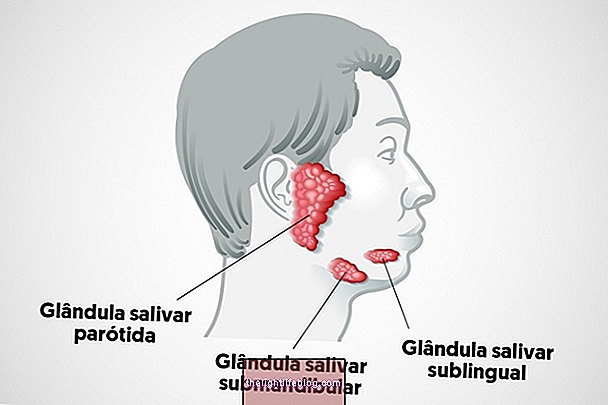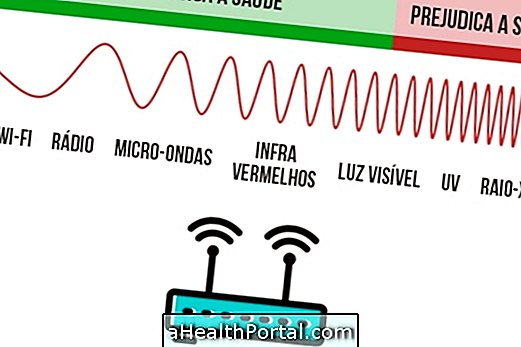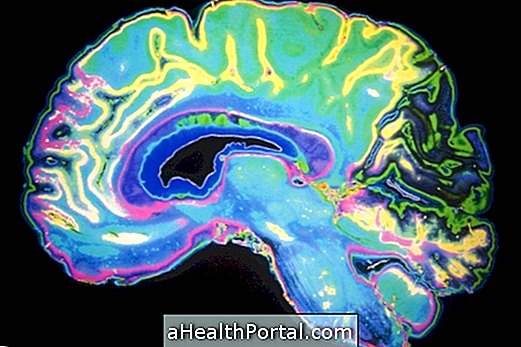The third-trimester exams, which comprise the 27th week of gestation until birth, are used to check the baby's development and to make sure there will be no problems during delivery.
In this final stage of pregnancy, in addition to the exams, parents should also prepare for childbirth and therefore should start buying all the items that will be needed for the first few weeks, as well as take a course of preparation for childbirth, so as to know how to act the moment the water bag explodes and also learn to take care of the baby first.
At the end of pregnancy, as of the 32nd week of gestation, the mother and baby's trunk should be ready, at the door or in the trunk of the car, for eventual need. Here's what the linen bag should look like.

Exams to be performed in the third trimester of pregnancy include:
1. Fetal Ultrasound
- When to do : It can be done any time during pregnancy and more than once.
Ultrasound is one of the most accomplished exams during pregnancy, as it allows to evaluate the development of the baby inside the uterus, as well as to see if there is any problem with the placenta. In addition, this examination also helps to predict with more precision the probable date of delivery.
While in some women, this test can be done only once, in others, it can be repeated regularly, especially if there is any special situation such as multiple pregnancy or vaginal bleeding at some point during pregnancy.
2. Research of the bacterium Streptococcus B
- When to do : usually between 35 and 37 weeks of pregnancy.
B streptococcus bacteria is quite common in the reproductive tract and usually does not cause any type of problem or symptom in women. However, when this bacterium comes in contact with the baby during childbirth, it can cause serious infections such as meningitis, pneumonia or even a whole body infection.
Therefore, in order to avoid such complications, the obstetrician usually does a test in which a cotton swab passes through the woman's genital area, which is then analyzed in the laboratory to identify if streptococcus B bacteria are present. If the result is positive, normally the pregnant woman needs to make antibiotics during labor to reduce the risk of passing the bacteria on to the baby.
3. Biophysical profile of the baby
- When to do : It is common after the 28th week of gestation.
This test allows you to assess the baby's movements as well as the amount of amniotic fluid. That way, if any of these values are wrong, it could mean that the baby is experiencing some problem and may need to have an early delivery.
4. Monitoring the fetal heart rate
- When to do it can be done any time after 20 weeks.
This test measures the baby's heart rate inside the uterus and helps to identify if there is any problem with its development. This type of monitoring is also done during childbirth to ensure that everything is going well, and can also be done several times after the 20th week of gestation.

5. Cardiotocography
- When to do : after 32 weeks of pregnancy.
The cardiotocography is done to evaluate the heartbeat and movements of the baby and for this, the doctor places a sensor in the belly of the mother that captures all the sounds. This test takes between 20 to 30 minutes and can be done several times after the 32 weeks, being indicated to do once a month in cases of pregnancy risk.
6. Pregnancy blood pressure assessment
- When to do : in all queries.
The assessment of blood pressure is very important in prenatal consultations because it helps to keep blood pressure well monitored, avoiding the onset of pre-eclampsia. Generally, when the pressure is too high, the pregnant woman should make changes to her diet and exercise regularly. However, if this is not enough, your doctor may advise you to use some medicines.
Understand better what pre-eclampsia is and how the treatment is done.
7. Stress test during contraction
- When to do : it is not done in all cases, being decided by the doctor.
This test is very similar to cardiotocography because it also evaluates the baby's heartbeat, however, it does this evaluation while a contraction occurs. This contraction is usually triggered by the doctor by injecting oxytocin directly into the blood.
This examination also helps to evaluate the health of the placenta, since during a contraction the placenta should be able to maintain the correct blood flow, maintaining the baby's heart rhythm. If this does not happen, the baby's heart rate decreases, so the baby may not be able to handle the stress of labor, and a cesarean section may be necessary.
In addition to these tests, the doctor may order others, depending on the health history of pregnant women and the development of diseases during pregnancy, especially to detect sexually transmitted diseases such as gonorrhea and chlamydia, which can cause problems such as premature labor and decreased fetus. See which are the 7 most common STDs in pregnancy.






















